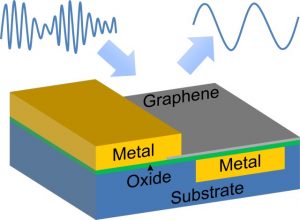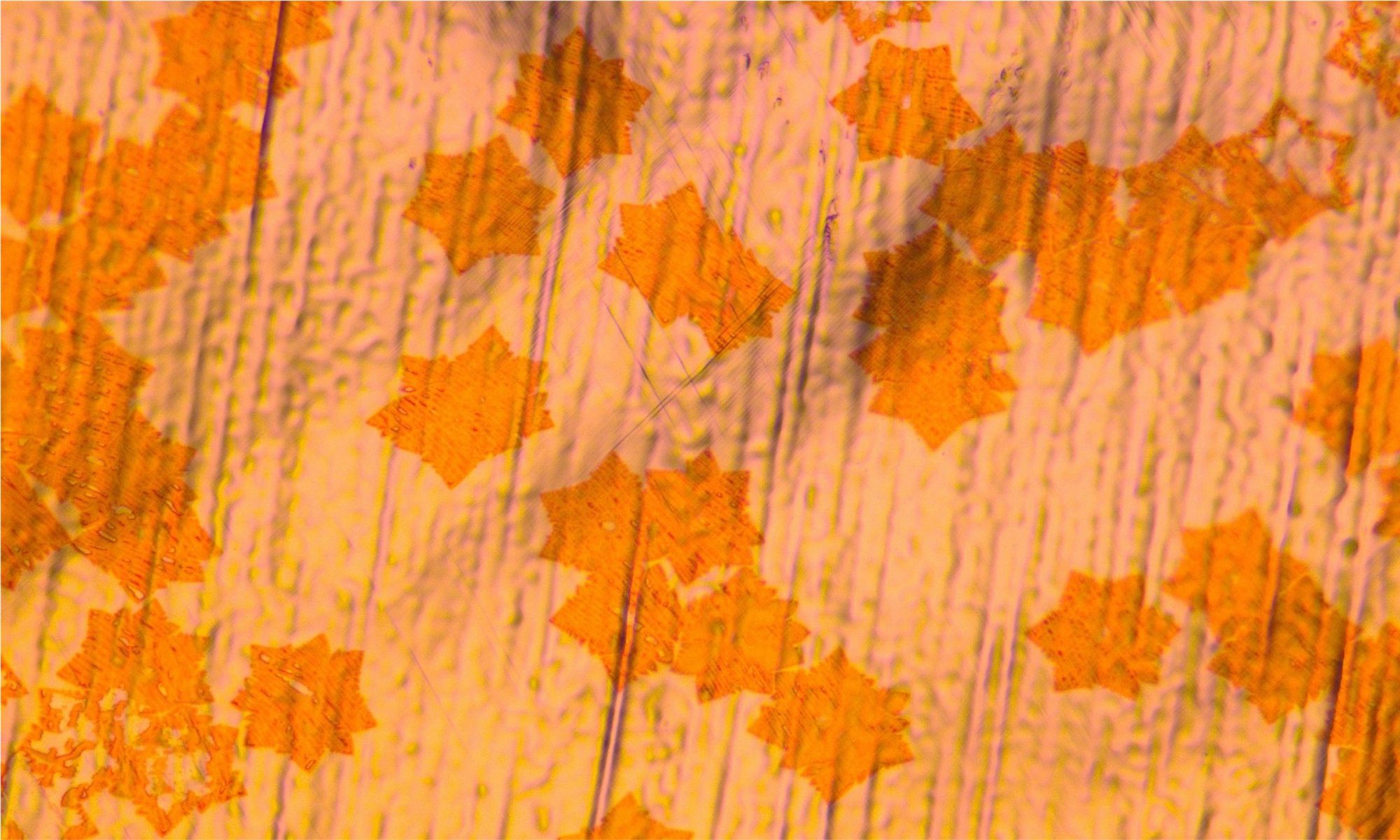In cooperation with RWTH Aachen University and the University of Pisa, researchers from AMO realized the world first microwave power detector based on metal-insulator-graphene (MIG) diodes, which is able to perform power detection for frequency up to 50 GHz.
Diodes are key components for RF electronic devices, which are typically used at radio frequencies for signal reception, frequency multiplication, or energy harvesting applications. In recent years thin film technology based diodes, for example metal-insulator-metal (MIM) or MIG diodes, attract increasing interest because of their excellent performance along with the low series resistance which is a crucial benefit for high frequency operation. Such thin film diodes are already used in display applications and the thin film technology enables an unrestrained choice on the target application substrate, such as flexible foil.

The MIG diodes presented in this work were fabricated at AMO using a thin film technology platform with CVD grown graphene and TiO2 deposited by atomic layer deposition. The MIG diodes show excellent static figures of merit significantly outperforming conventional MIMs. RF power detection based on the MIG diode is for the first time demonstrated in this work, showing a linear detection responsivity of 2.8 V/W at 2.4 GHz and 1.1 V/W at 50 GHz. These excellent DC and RF performance parameters make MIG diodes very promising for future application in thin-film technology and for 5G.
The work leading to these results was financially supported by the European Commission under the projects Graphene Flagship and SPINOGRAPH, and by the German Science Foundation (DFG) within the priority program 1796 FFlexCom.
Source: Mehrdad Shaygan, Zhenxing Wang, Mohamed Saeed Elsayed, Martin Otto, Giuseppe Iannaccone, Ahmed Hamed Ghareeb, Gianluca Fiori, Renato Negra, Daniel Neumaier
“High performance metal-insulator-graphene diodes for radio frequency power detection application”
Nanoscale, 2017, DOI: 10.1039/C7NR02793A
